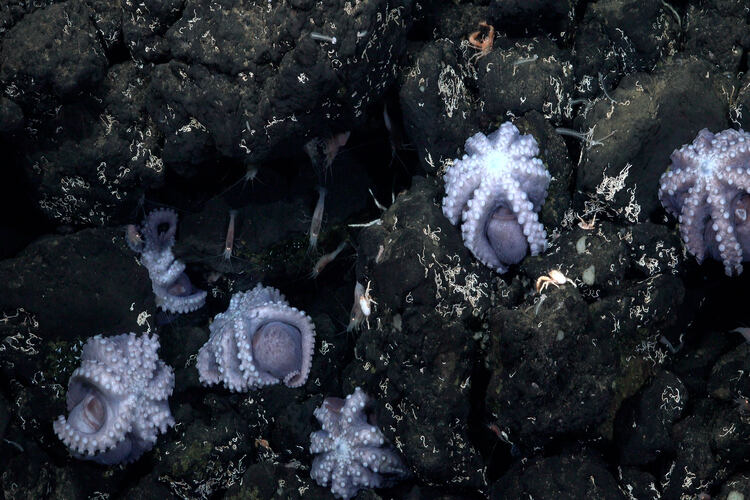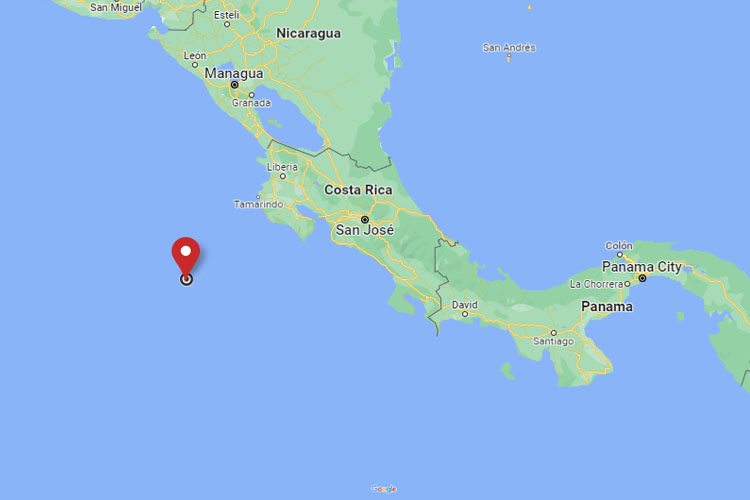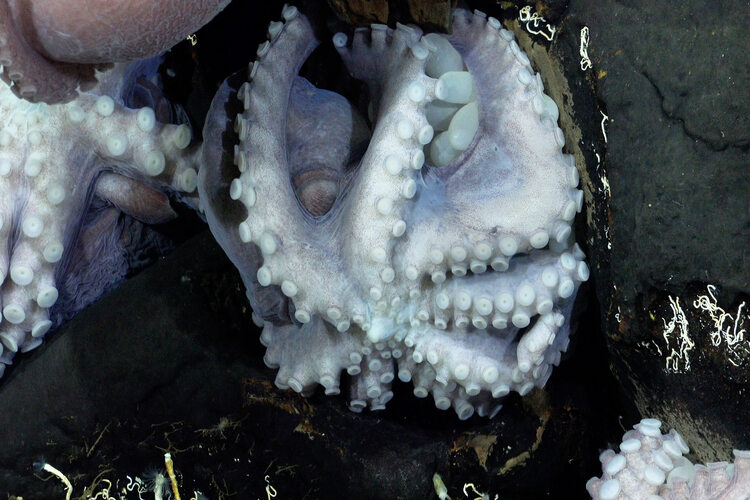
Potential new octopus species found in 19-day expedition that discovered third known octopus nursery in world
A new deep-sea octopus nursery has been discovered more than 2800 metres below sea level, at a low-temperature hydrothermal vent offshore of Costa Rica – bringing the total number of known octopus nurseries in the world to three.
A team of scientists, including 10 Costa-Rican national, were able to confirm that the first known aggregation of deep-sea octopus found on the Dorado Outcrop is an active nursery, and that the octopus may be a new species of Muusoctopus, a small to medium-sized genus of octopus without an ink sac.
Located approximately 250km off the Pacific coast of Costa Rica, the Dorado Outcrop is a tiny rocky ridge roughly the size of a football field which rises around 150m from the seafloor, part of the Cocos Plate.
Related articles

The Dorado Outcrop, as well as other seamounts, are currently unprotected from human activities such as fishing. Some scientists on the research team are now working to determine if seamounts should be designated as marine protected areas.
The 19-day Octopus Odyssey expedition took place aboard the Schmidt Ocean Institute’s research vessel, Falkor, including 18 international scientists led by Dr Beth Orcutt of the US-based Bigelow Laboratory for Ocean Sciences, and Dr Jorge Cortes of the University of Costa Rica.
During the expedition, scientists saw the Muusoctopus species hatch, disproving the suggestion that the area is inhospitable for octopus young. First discovered in 2013, the Dorado Outcrop nursery marked the first observation of female octopuses gathering together to brood eggs. At the time, no developing embryos were found, sparking the initial conclusion that the site may not have conditions contingent with octopus growth.

‘The discovery of a new active octopus nursery over 2,800 meters beneath the sea surface in Costa Rican waters proves there is still so much to learn about our Ocean,’ said Schmidt Ocean Institute Executive Director, Dr. Jyotika Virmani.
‘The deep-sea off Costa Rica rides the edge of human imagination, with spectacular footage collected by ROV SuBastian of tripod fish, octopus hatchlings, and coral gardens,’ Virmani continued.
The scientists used an underwater robot to observe baby octopuses, as well as five previously undiscovered seamounts which contained thriving biodiversity and hundreds of animals – of which many are suspected to be new species.
‘This expedition to the Pacific deep waters of Costa Rica has been a superb opportunity for us to get to know our own country,’ said Cortes. ‘The expedition had a significant number of local scientists and students which will accelerate our capacity to study deep regions. The information, samples, and images are important to Costa Rica to show its richness and will be used for scientific studies, and outreach to raise awareness of what we have and why we should protect it.’
- Orca attacking adult whale shark to eat its liver - 3 August 2023
- ‘The Deepest Breath’ freediving documentary on Netflixnow - 28 July 2023
- Freediver bitten by oceanic whitetip shark - 27 July 2023


